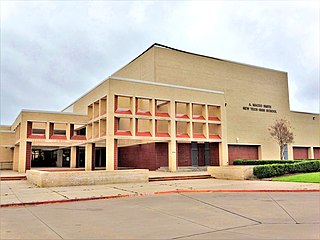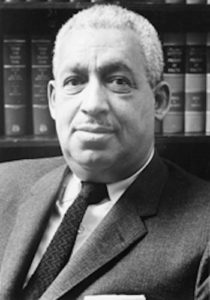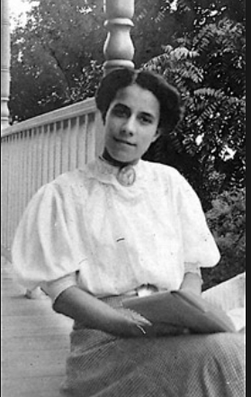
The civil rights movement was a social movement and campaign from 1954 to 1968 in the United States to abolish legalized racial segregation, discrimination, and disenfranchisement in the country. The movement had its origins in the Reconstruction era during the late 19th century and had its modern roots in the 1940s, although the movement made its largest legislative gains in the 1960s after years of direct actions and grassroots protests. The social movement's major nonviolent resistance and civil disobedience campaigns eventually secured new protections in federal law for the civil rights of all Americans.

Juanita Craft was an American activist and politician. Craft was an activist in the civil rights movement and also served as a member of the Dallas City Council in Texas.
Charles Hamilton Houston was an American lawyer. He was the dean of Howard University Law School and NAACP first special counsel. A graduate of Amherst College and Harvard Law School, Houston played a significant role in dismantling Jim Crow laws, especially attacking segregation in schools and racial housing covenants. He earned the title "The Man Who Killed Jim Crow".
James Edmund Groppi was an erstwhile Catholic priest and noted civil rights activist based in Milwaukee, Wisconsin. He became well known for leading numerous protests, many times being arrested during them. In 1976, he was excommunicated by the church for marrying. In 1985, he died of brain cancer at the age of 54.
The civil rights movement (1896–1954) was a long, primarily nonviolent action to bring full civil rights and equality under the law to all Americans. The era has had a lasting impact on American society – in its tactics, the increased social and legal acceptance of civil rights, and in its exposure of the prevalence and cost of racism.
This is a timeline of African-American history, the part of history that deals with African Americans.

George Wesley Lee was an African-American civil rights leader, minister, and entrepreneur. He was a vice president of the Regional Council of Negro Leadership and head of the Belzoni, Mississippi, branch of the National Association for the Advancement of Colored People. He was assassinated in 1955 in retaliation for his efforts to register African Americans to vote. Since 1890 they had been effectively disenfranchised in Mississippi due to a new state constitution; other states across the South passed similar acts and constitutions, excluding millions of people from the political system and establishing one-party states.
Hamilton Park is a neighborhood in north Dallas, Texas (USA), named for Dr. Richard T. Hamilton, a physician and black civic leader. It is located in Northwest Lake Highlands, on the southeastern side of the North Central Expressway /I-635 interchange, north of Forest Lane, and west of DART's Red Line light-rail line. The neighborhood had a population of 2,148 in 1990.

New Tech High School at B. F. Darrell, formerly A. Maceo Smith New Tech High School, is a four-year public high school serving grades 9–12 in the Oak Cliff area of Dallas, Texas (USA). It is part of the Dallas Independent School District. It is a technology magnet school established in 2011 in the former A. Maceo Smith High School; it now occupies the former B. F. Darrell Elementary School. In 2015, the school was rated "Met Standard" by the Texas Education Agency.

Loren Miller was an American journalist, civil rights activist, attorney, and judge. Miller was appointed to the Los Angeles County Superior Court by governor Edmund G. "Pat" Brown in 1964 and served until his death in 1967. Miller was a specialist in housing discrimination, whose involvement in the early stages of the Civil Rights Movement earned him a reputation as a tenacious fighter for equal housing opportunities for minorities. Miller argued some of the most historic civil rights cases ever heard before the Supreme Court of the United States. He was chief counsel before the court in the 1948 decision that led to the outlawing of racial restrictive covenants, Shelley v. Kraemer.
The Jim Crow laws were state and local laws introduced in the Southern United States in the late 19th and early 20th centuries that enforced racial segregation, "Jim Crow" being a pejorative term for an African American. Such laws remained in force until 1965. Formal and informal segregation policies were present in other areas of the United States as well, even as several states outside the South had banned discrimination in public accommodations and voting. Southern laws were enacted by white-dominated state legislatures to disenfranchise and remove political and economic gains made by African Americans during the Reconstruction era. Such continuing racial segregation was also supported by the successful Lily-White Movement.

William Robert Ming Jr. was an American lawyer, attorney with the National Association for the Advancement of Colored People (NAACP) and law professor at University of Chicago Law School and Howard University School of Law. He presided over the Freeman Field mutiny court-martials involving the Tuskegee Airmen. He is best remembered for being a member of the Brown v. Board of Education litigation team and for working on a number of the important cases leading to Brown, the decision in which the United States Supreme Court ruled de jure racial segregation a violation of the Equal Protection Clause of the Fourteenth Amendment of the United States Constitution.

Barack Obama Male Leadership Academy at A. Maceo Smith (BOMLA) is a magnet secondary school for boys located in the Oak Cliff area of Dallas, Texas. It is a part of the Dallas Independent School District. After the Irma Lerma Rangel Young Women's Leadership School, it is DISD's second single gender school.

A. Maceo Smith High School was a four-year public high school serving grades 9-12 in the Oak Cliff area of Dallas, Texas (USA). It was part of the Dallas Independent School District. It was replaced by A. Maceo Smith New Tech High School in 2011, and in 2018 Barack Obama Male Leadership Academy began to occupy the campus.
This is a timeline of the civil rights movement in the United States, a nonviolent mid-20th century freedom movement to gain legal equality and the enforcement of constitutional rights for people of color. The goals of the movement included securing equal protection under the law, ending legally institutionalized racial discrimination, and gaining equal access to public facilities, education reform, fair housing, and the ability to vote.
Maxine (Atkins) Smith born in Memphis, Tennessee, United States, was an academic, civil rights activist, and school board official.
The Dallas–Fort Worth metroplex has 1.2 million African-Americans, the 2nd-largest metro population of African-Americans in Texas.

Mary Ellen Henderson was an African-American educator and civil rights activist in the mid-1900s. She is most famous for her work desegregating living spaces in Falls Church, working to build better facilities for black students in Falls Church, Virginia and starting the CCPL, the first rural branch of the NAACP.

Maceo Conrad Martin Sr. was an American banker and civil rights activist.

The Dallas Express was a weekly newspaper published in Dallas from 1892 to 1970. It covered news of African Americans in Dallas and a large portion of Texas. It called itself "The South's Oldest and Largest Negro Newspaper". It was a member of the Associated Negro Press.









